Did you know only a third of homes in the UK have updated their insulation? With energy prices soaring the best investment to get ready for the winter is to update your home's insulation.
25 April 2022 | Make my home greener
Many of us think that once our homes are insulated, then there's no need to update it, which isn't true. However, for your home to be as energy-efficient as possible and save money on your energy bills, you may want to consider updating your insulation to meet the current building regulation.
We've recently researched the UK's insulation, and the facts speak for themselves. Whilst we're happy to spend money on upgrading our phones, TVs, kitchens and cars, we don't invest in updating our insulation.
Only 7.5% of UK homes have an insulation age of 2002 or younger. Meaning a huge number of houses are not meeting the current insulation regulations.(1)
A lot of us live in homes built before 1976. Only 0.03% of these homes have been updated with additional energy efficiency measures, which means the property meets the 2002 insulation regulations.(1)
Consumer research of 2,000 UK households commissioned by us to support the study found that despite the average household living with insulation standards dating back at least 46 years, only a third (37%) of homes have ever updated their insulation.(2)
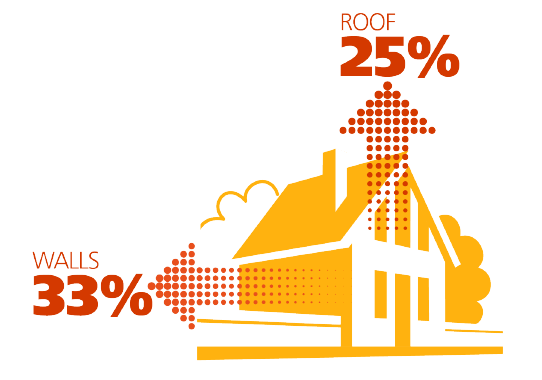
Floors, lofts, pipes, windows and walls are the main areas where hot air will escape and cold air can come in.
There are many simple yet effective ways to insulate your home, which can significantly reduce the amount of heat you waste whilst lowering your heating bills.
Explore how this can be done in every part of your house below.
Installing loft insulation is as simple as unrolling a rug. A mineral fibre material is laid between the joists and then over the joists in your loft or roof. This thick material captures heat normally lost through the roof and stops draughts getting in.
If you already have loft insulation, you could still benefit from a top-up. If your insulation is 100mm or less, you can increase it to the recommended level of 270mm.
To start we need to find out if your home is suitable for cavity wall insulation. To assess this we drill small holes in your outside walls. If it's suitable for your property, the cavity between the inner and outer walls is then filled with insulating material. The holes in the brickwork are then filled in again. The installation process takes just a few hours and should come with a Cavity Insulation Guarantee Agency (CIGA) guarantee.
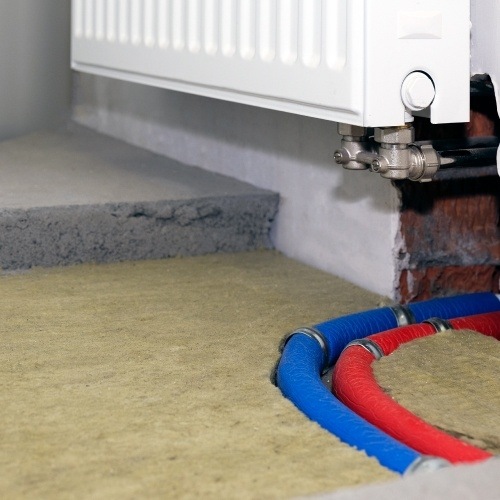
According to the Energy Saving Trust, a semi-detached house could save £75 a year on heating costs if you have well-insulated floors.(4)
You can insulate your floors either by laying down new insulation or by sealing draughts and gaps. You can use a sealant from a hardware store to seal up gaps but if you need proper underfloor insulation, first you need to work out what kind of floor you have.
Solid wall insulation keeps older homes warmer for longer. This can transform the look of your property and stop heat loss – it's like wrapping a huge blanket around your home. Solid wall installation normally takes between 2-4 weeks and can be done with very little disruption because no interior work is needed.
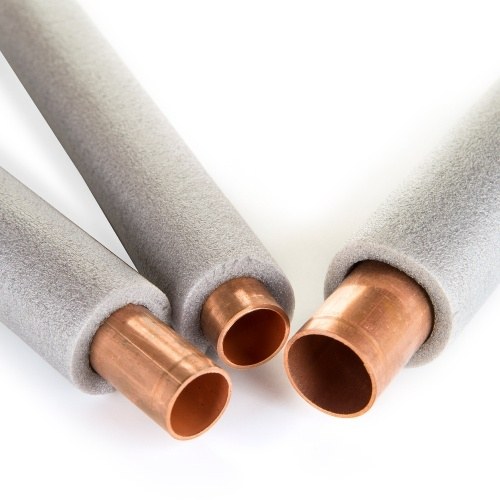
Pipe insulation is when you cover your pipes with foam tubes or a reflective wrapping. It's a great idea to insulate any exposed pipes leading from your tank to your boiler to keep the heat in.
Foam covers keep your pipes snug – and therefore they lose less heat. You can get different shapes and sizes from any hardware shop and they're usually a cheap option for keeping that extra bit of heat in.
Pipe wrap: this is a foam usually that fits onto your pipes with a slit so you can easily put it on. Sometimes this has a reflective silver outer layer which is an added layer to keep the heat in.
Pipe lagging: this is a fabric alternative for your pipe insulation, made of very thick material and is usually more expensive than the foam option.
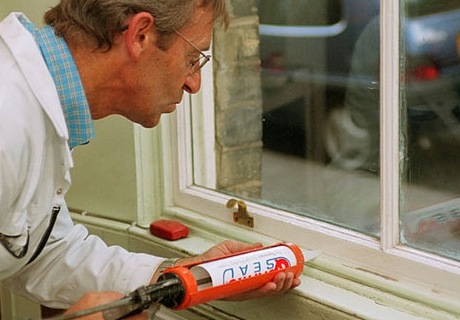
Draught insulation is a cheap and effective way to save you energy and money by stopping heat escaping from your home. By blocking any gaps where heat can escape and cold air can get in, you'll keep your home temperature just right all year round.
Making sure your home has door insulation and window insulation means you keep the cold air from entering your home and the warm air from escaping. These can all be blocked up with different kinds of draught excluders. There's lots to choose from.
It's really important not to block any deliberately placed ventilation points – such as extractor fans, grilles or wall vents.
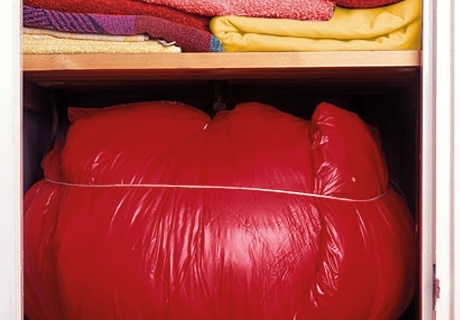
Lagging water tanks and pipes and insulating behind radiators reduces the amount of heat lost, so you spend less money heating water up, and hot water stays hotter for longer. Insulating your hot water cylinder is one of the easiest ways to save energy and, therefore, money.
If you already have a jacket fitted around your tank, check the thickness. It should be at least 80mm thick; if it isn’t, consider buying a new one. Upgrading your hot water tank insulation from 25mm to 80mm thick, using a British Standard jacket, could save you around £20 a year, which is more than the cost of the jacket.
Slipping pipe insulation around your exposed hot water pipes will keep your hot water hotter for longer. Insulating pipes is easy if the pipes are accessible; if your pipes are hard to reach, you may need to engage a professional.
We offer eligible customers home improvements like insulation through our Energy Company Obligation scheme. The government have also introduced the Great British Insulation Scheme, which helps with grants for installing insulation.
The Energy Company Obligation (ECO) Scheme was set up in April 2013. The scheme aims to help eligible customers make their homes more energy-efficient by installing free energy-saving measures and heating improvements. This helps customers keep their homes warm and keep their energy bills down.
The new ECO4 scheme will run between April 2022 and March 2026. Eligible EDF customers can access a range of energy efficiency improvements that will help them improve their home's EPC ratings to a C or above. To increase your home's energy efficiency, implementing a package of improvements is necessary instead of just one. Our trusted installers will recommend specific improvements based on a survey of your home to ensure they will help increase your EPC rating.
Here is the data used to work out the insulation age of properties across the UK.
a. The Sprift Insulation Age looks at many aspects of a property and applies insights to determine an overall score and insulation age for each property. The insulation age bands reflect significant changes in UK building regulations over the past half-century and more.
b. This full data set considers all properties with a valid EPC in England and Wales on 30/9/2021, a total of 21,857,699 properties.
c. To note there is no data for 233,853 properties - homes, where there are no data, is where the home age has not been entered into the EPC rating
The research was conducted by OnePoll of 2,000 UK adults who own their homes, rent or live in social housing between 1 and 8 April 2022
Source: Energy Savings Trust roof and loft insulation
Heat loss percentage is based on an uninsulated average home and pound savings is based on a detached home
Estimates are based on a gas-heated semi-detached home. Figures are based on fuel prices as of April 2022. Source: Energy Saving Trust for floor insulation.